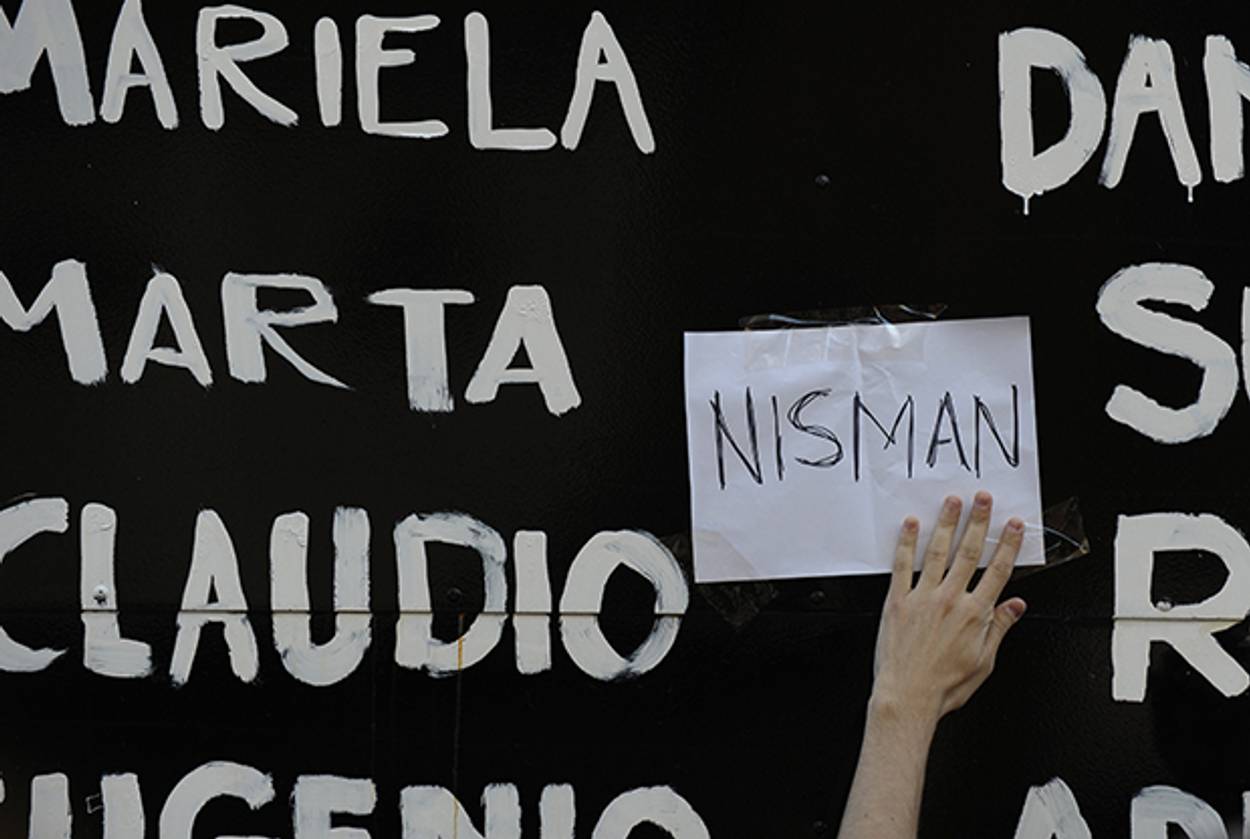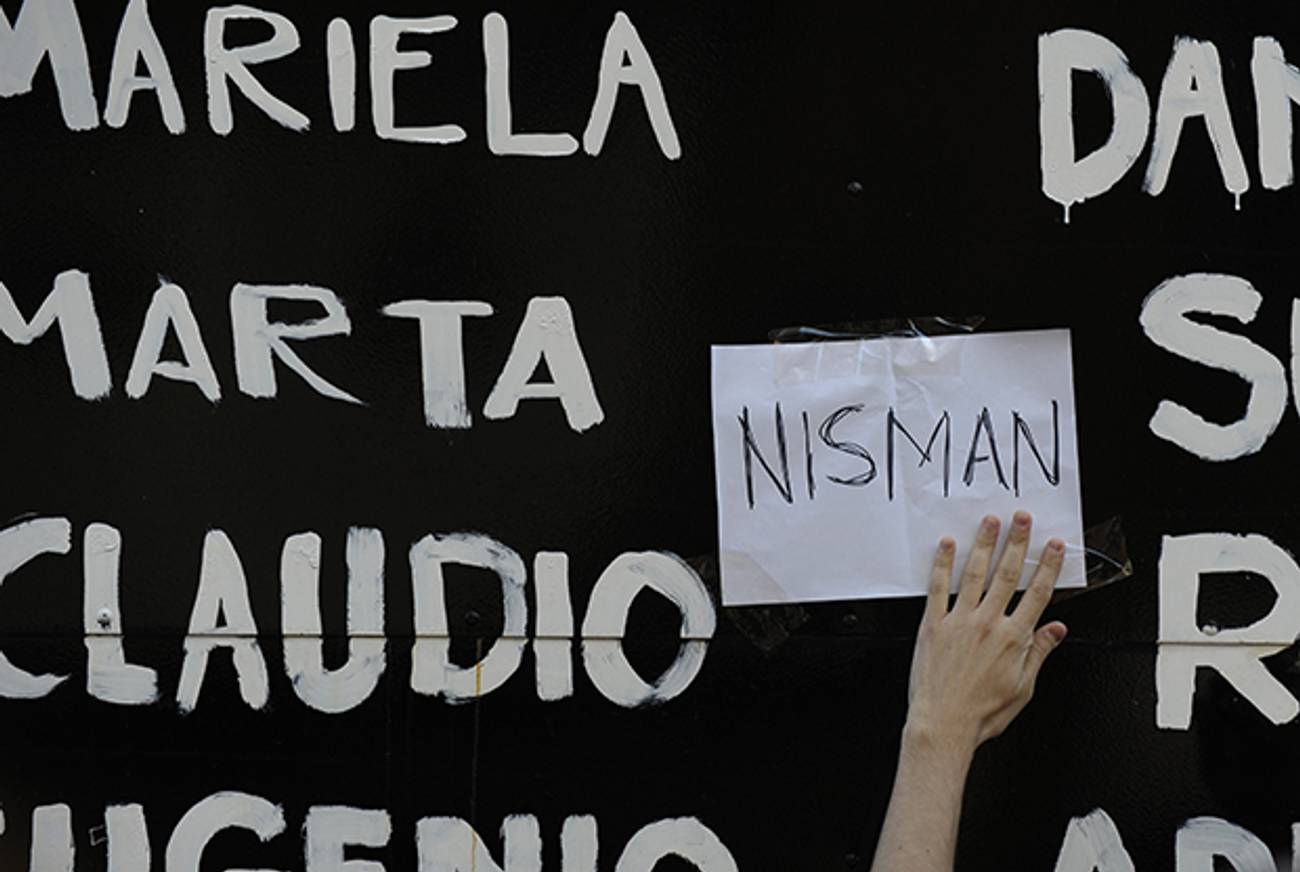Is Iran Behind the Murder of Alberto Nisman?
Argentine prosecutor’s findings implicated Tehran in 1994 JCC bombing




After publicly speculating about what drives a man to kill himself, Argentina’s President Cristina Kirchner now says that Alberto Nisman, the special prosecutor into the 1994 bombing of the Jewish Community Center in Buenos Aires that killed 85 people and wounded hundreds, didn’t commit suicide after all.
“In Argentina, as in all places, not everything is what it appears to be, and vice versa,”. Kirchner said in a statement posted on her Facebook and Twitter accounts. According to Kirchner, the 51-year-old Nisman, who was found Sunday evening in his apartment with a gunshot wound to the head, was killed to make her look bad. The way she sees it, his investigation into the AMIA case wrongly implicated her in a cover-up to protect the Islamic Republic of Iran, and his murder just as wrongly implicates her as part of a larger conspiracy to silence him.
Maybe Kirchner did have something to do with Nisman’s murder, maybe it was a faction in the Argentine intelligence community that his investigation also pointed at. But there’s another player here that shouldn’t be overlooked—Iran.
Nisman’s investigation concluded that Tehran was responsible for both the 1994 bombing and the 1992 attack on the Israeli embassy in Buenos Aires that killed 29 people and wounded 242. Analysts, journalists, and Western intelligence services have long believed that Iran was behind the two bombings. However, what distinguished Nisman’s investigation was the motive he attributed to the Iranians—to punish Buenos Aires for first stalling and then canceling bilateral agreements on nuclear technology.
Nisman’s interpretation went against the standard understanding of the two attacks. Most observers argued that the 1992 bombing of the Israeli embassy came in retaliation for Israel’s assassination of Hezbollah’s then-General Secretary Abbas Mussawi; the 1994 AMIA bombing was simply a follow-on of the 1992 attack.
However, as Nisman explained to me several years ago in Washington, D.C., the Iranian networks were not set up for rapid response. According to Nisman, the March 17 attack on the embassy had been planned well before the February 16 assassination of Mussawi—even the car used in the bombing had been prepared earlier in the winter.
Further, it’s worth remembering that the Iranians are not in the habit of using their painstakingly established networks to retaliate when their Arab assets, like Hezbollah, are exterminated. If the Arabs want to take revenge themselves, to get Israel back, for instance, for killing Imad Mughniyeh, mastermind of the Argentinian operations, in Damascus 2007, that’s fine, so long as they do it on their own time. Iranian terrorist operations are waged only for the purpose of advancing Tehran’s strategic interests.
Argentina’s then-President Carlos Menem wanted better relations with the West, particularly his large neighbor to the north. According to Nisman, it’s when Menem succumbed to the Clinton White House’s pressure that Tehran opted to pressure Buenos Aires in its own fashion—with spectacular acts of terror.
Why, I asked Nisman, did the Iranians target Jews, first the Israeli embassy and then AMIA, when they were sending a message to the Argentine government? Nisman, a non-observant Jew, said the Jews were a convenient target. Why not attack a successful small community and send the warning that next time it might be a community Argentines really care about?
When the Kirchner government announced two years ago that it was establishing an independent “truth commission” to investigate the attacks with the prime suspect—Iran—the country’s Jewish community was up in arms, as was Israel. Deputy Foreign Minister Danny Ayalon likened it to “inviting the murderer to participate in the murder investigation.”
It seems that the point of the truth commission was to further muddy the waters, and eventually help clear Iran of any responsibility for the attacks. Nisman found evidence that high-level Argentine officials, including Kirchner, participated in the whitewash. In return for exculpating Iran’s Supreme Leader Ali Khamenei, President Ali Akbar Rafsanjani, and others, including “cultural” attache Mohsen Rabbani, believed to be responsible for planning the worst terrorist attacks in Argentina’s history, Argentine agricultural products would have access to Iranian markets, and Tehran would send cheap oil to Argentina.
Cristina Kirchner and many officials in her government clearly had an interest in silencing Nisman. But there are others who have a very powerful motive. If, in Nisman’s understanding, the purpose of the 1992 and 1994 attacks was to punish Argentina for reconsidering its bilateral relationship with Iran on its nuclear file, then killing the special prosecutor into the two bombings simply underscores that Tehran considers its nuclear program as a vital interest.
With the world’s attention turned to Geneva, where Secretary of State John Kerry and his Iranian counterpart Javad Zarif are negotiating a permanent agreement over Iran’s nuclear program, Tehran shifted the focus to a bathroom in an apartment in Buenos Aires, where a man of courage and integrity was murdered earlier this week. Whether or not it was Iran that killed Alberto Nisman Monday, his life work was to prove that it pulled the trigger in 1992 and 1994. His assassination reminds us of what the Iranians are capable of doing.
Previous: Prosecutor Who Accused Argentina of Covering Up Jewish Center Bombing Found Dead
Related: Something Is Rotten in Argentina
Iran to Investigate JCC Bombing
Lee Smith is the author of The Permanent Coup: How Enemies Foreign and Domestic Targeted the American President (2020).